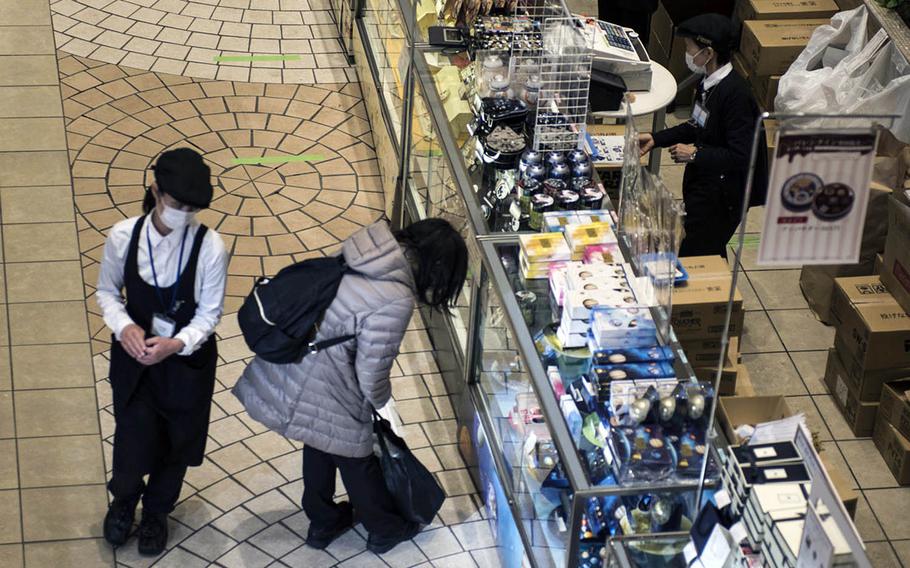
Clerks mask themselves againt the coronavirus at department store in Hachioji, Japan, Tuesday, Feb. 2, 2021. (Theron Godbold/Stars and Stripes)
Stars and Stripes is making stories on the coronavirus pandemic available free of charge. See other free reports here. Sign up for our daily coronavirus newsletter here. Please support our journalism with a subscription.
TOKYO – The number of new coronavirus infections in Japan’s capital rose by more than 100 Wednesday but remained below 1,000 for a sixth straight day.
The Tokyo Metropolitan Government said 676 people tested positive for COVID-19, the coronavirus respiratory disease, according to public broadcaster NHK. Mid-week numbers typically climb as more test results become available.
Japan reported 2,108 new cases on Tuesday, down from 2,766 the day before and the pandemic peak of 7,855 new infections on one day in early January.
Camp Zama, the headquarters of U.S. Army Japan southwest of Tokyo, was the only U.S. military base in Japan to report a new coronavirus case by 6 p.m. Wednesday. That individual was in quarantine as a new arrival to Japan and tested positive for COVID-19 sometime since Thursday, according to an Army news release.
On Tuesday evening, Prime Minister Yoshihide Suga extended until March 7 a state of emergency in 10 prefectures that include Tokyo, the three surrounding prefectures that make up the greater metro area and Osaka.
“I want to thank everyone for their cooperation and apologize that the state of emergency could not be lifted for all areas,” he said during a televised news conference Tuesday evening.
The emergency was originally set to expire Saturday but will lift only in Tochigi prefecture north of Tokyo.
U.S. military bases in and around Tokyo have tailored their restrictions to comply with the state of emergency. Suga’s declaration allows local authorities to ask businesses to limit their hours, employees to telework and residents to limit their travel. Compliance is voluntary.
Suga said the emergency measures are necessary to ultimately reduce the number of patients hospitalized in serious condition.
“I made the decision to ensure that infected cases are surely on the decline no matter what, by asking the citizens to hold out a little longer,” he said.
Suga said the emergency may be lifted in some areas if situation improves. The yardstick will be reducing new cases in Tokyo to 500 per day and 300 in Osaka, and reducing the strain on hospitals.
Stars and Stripes reporter Hana Kusumoto contributed to this report.
ditzler.joseph@stripes.com Twitter: @JosephDitzler
kusumoto.hana@stripes.com Twitter: @HanaKusumoto